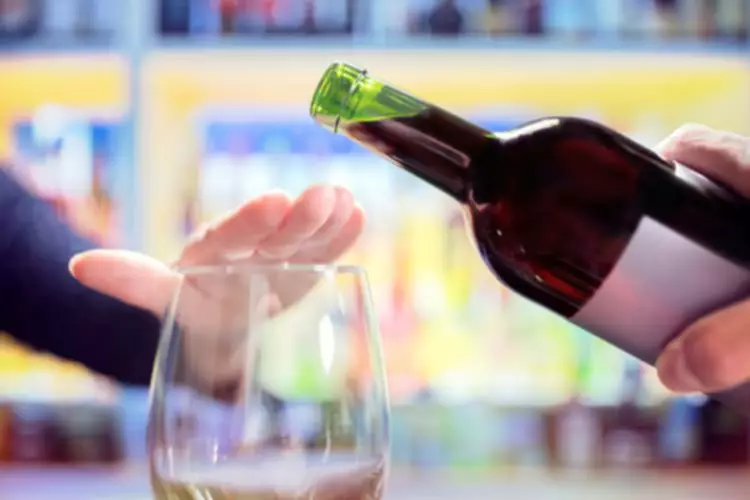
Learning how to develop newsocial contacts with people who are not substance abusers is anotherexample. The cognitive-behavioral model assumes that substance abusers are deficientin coping skills, choose not to use those they have, or are inhibited fromdoing so (Monti et al., 1994,1995). It also assumes thatover the course of time, substance abusers develop a particular set ofeffect expectancies based on their observations of peers and significantothers abusing substances to try to cope with difficult situations andthrough their own experiences of the positive effects of substances. Theyhave come to believe that substances have positive benefits that are moreimmediate and prominent than their negative consequences.

Behavioral Therapy Techniques Based on Classical

These behavioral techniques have been incorporatedinto more comprehensive behavioral self-control approaches, even thosewith an abstinence goal (Larimer andMarlatt, 1990; Sitharthanet al., 1997). The decision to implement such interventionswill be guided by cbt interventions for substance abuse the client’s continued self-monitoring, which theclient and counselor review at each session. In contrast to many other methods, behavioral approaches to the treatment ofsubstance abuse have substantial research evidence in support of theireffectiveness.
Multidimensional treatment for ASPD co-morbid with substance abuse: Efficacy of MET and CBT in a case study
For the cognitive-behavioral therapist, an individual’s appraisal ofstressful situations and his ability to cope with the demands of thesesituations are important influences on the initiation and maintenance ofsubstance abuse, as well as relapse after cessation of use (Hawkins, 1992; Marlatt and Gordon, 1985; Shiffman, 1987, 1989; Wills and Hirky,1996). Cognitive behavioral therapy examples differ from other psychotherapies in several vital ways. First, unlike psychodynamic therapy, it does not try to get to the bottom of a person’s subconscious to determine their actions or behavior. Second, CBT therapy does not take a patient-centered approach where the therapist passively listens, allowing the patient to resolve the issues independently.
- Platforms for delivering addiction interventions via technology are diverse and multiplying rapidly.
- If aperson has low self-efficacy due to a lack of necessary coping skills, shemight be expected to have negative or distorted thoughts and beliefs aboutherself and her situation, have reduced motivation to even try to cope, andmay be depressed and perceive herself as helpless.
- In a randomized controlled trial, 75 adults with marijuana use disorder were randomized to 2 sessions of brief treatment versus a 9-session clinician-delivered MET-CBT approach, or a 9-session version of TES emphasizing MET and CBT.
Behavioral Theory
A CBT therapist helps recovering addicts focus and reexamine destructive thought patterns. These flawed perceptions change the way an individual looks at the present and the future. CBT for AOD is a well-established intervention with demonstrated efficacy, effect sizes are in the small-to-moderate range, and there is potential for tailoring given the modular https://ecosoberhouse.com/article/boredom-drinking-and-how-to-stop-it/ format of the intervention. Future work should consider mechanisms of CBT efficacy and key conditions for dissemination and implementation with fidelity. Latessa and his colleagues identify eight principles of effective correctional intervention. They are included here so you can better understand how to increase the chance of successful intervention.
Several of these are reviewed, as they have been successfullyincorporated into an integrated cognitive-behavioral model of addictive behaviorsand their treatment. CBT4CBT (computer based training in cognitive behavioral therapy) covers seven key cognitive behavioral skills, or ‘modules’, (functional analyses, coping with craving, refusing offers of drugs or alcohol, problem solving skills, recognizing and changing thoughts, decision making skills, and HIV/HCV risk reduction). They found thatpositive social experiences and negative emotional states were importantrisk factors for patients who were dependent on alcohol or cocaine. Positiveemotional and situational factors were most important for those usingmarijuana.
- It is one of the most commonly offered forms of therapy in substance abuse treatment programs.
- There is typically a phase of personalized assessment characterized by techniques such as functional analysis.
- Now that you have completed this section, you should understand the basis for effective practices central to the TJC model.
- Cognitive behavioral therapy teaches those recovering from addiction and mental illness to find connections between their thoughts, feelings, and actions and increase awareness of how these things impact recovery.
- In this instance the patient would be encouraged to refrain from drinking at the holiday party and assess the degree to which the event was enjoyable.
Efficacy of Cognitive Behavioral Therapy
- Because cognitive therapy is usually planned for comparatively shorttreatment times, there has not been much research to study the relativeeffectiveness of longer term cognitive therapy.
- The fundamental principle of cognitive behavior therapy is to address harmful thought patterns and implement more positive ways of thinking in people.
- For CBT for AOD, the MOBC of interest are the specific indicators that are, based in theory, expected to transmit the effects of the intervention on its targeted outcomes.
- Listen to Greenhouse Treatment Center‘s Gary Malone, MD discuss the role of therapy in addiction treatment.
- Although it was initially developed as a therapy for depression, later CBT has been found to be useful for other mental health problems.

